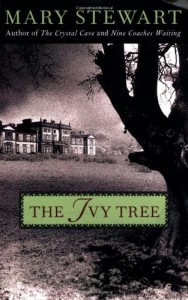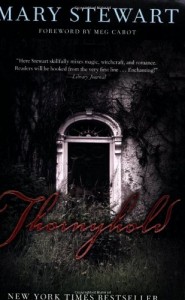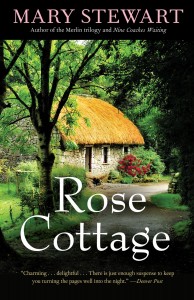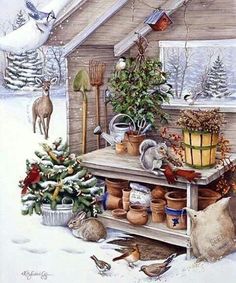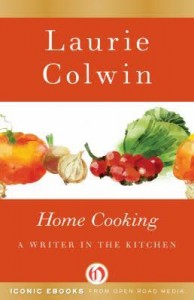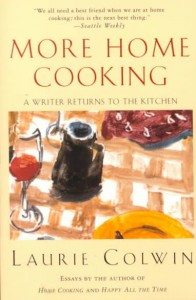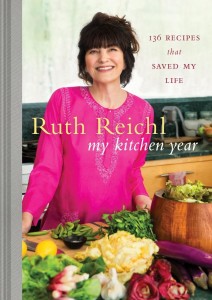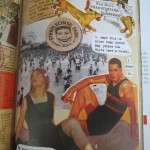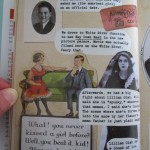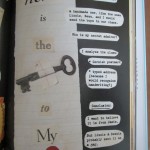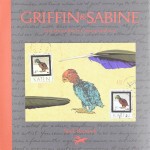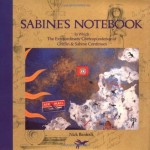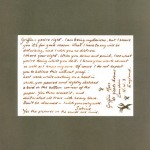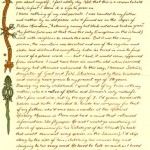Taking a little break ~~
 I’m taking a wee break, while I enjoy the many treats and delights that surround me after Christmas. Especially some lovely new books.
I’m taking a wee break, while I enjoy the many treats and delights that surround me after Christmas. Especially some lovely new books.
Back soon. Happy Holidays, Book Barmy
And to all a good night ~~
In Iceland, it is a Christmas Eve tradition to give a book as a gift.
This is called Jólabókaflóð, or the Christmas Book Flood.
During Christmas the sun doesn’t rise until 11 am and it’s dark by 3 PM.
So after a brisk (and chilly!) afternoon walk around town with the rest of their neighbors, the whole family snuggles into their homes with a hot drink and to read their new books.
Wishing all my fellow book lovers a traditional Jólabókaflóð ~~
and to all a good night ~~
Gift Ideas for the Romantic
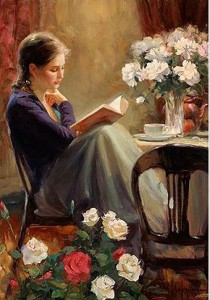 When growing up outside of D.C., my best friend and I spent one hot and humid summer reading Gothic and regency romances, one right after another. Her mother had scored a grocery sack of these paperback delights at a yard sale and we holed up in front of a fan and sighed over the romantic plights of the heroines. These heroines were usually spirited (but always ladylike) governesses, the settings often a lonely country manor on a windswept moor and there was always — always a handsome, but notorious rake.
When growing up outside of D.C., my best friend and I spent one hot and humid summer reading Gothic and regency romances, one right after another. Her mother had scored a grocery sack of these paperback delights at a yard sale and we holed up in front of a fan and sighed over the romantic plights of the heroines. These heroines were usually spirited (but always ladylike) governesses, the settings often a lonely country manor on a windswept moor and there was always — always a handsome, but notorious rake.
While I like to think my taste in literature has matured – there is still a bit of that 11 year old hopeless romantic inside me. Now I read books in all sorts of genres and from authors far and wide. Many a time these are noteworthy, important books that force me to confront worlds that are cruel and unhappy. To cleanse my palate, I sometimes secretly escape into books that are reminiscent of that long ago summer of Gothic romance reading.
Mary Stewart is probably best known for her Arthurian/Merlin legends – The Hollow Hills, etc. I’ve never read those, but I do recommend her Gothic romance tales – re-published by the Chicago Review Press as “rediscovered classics”.
These are not “light” romantic reads. The intricate plots and lush, detailed descriptions, require patience and attention. But that is part of the enjoyment — a reader can get lost in these books, in a most enjoyable way. There is always a bit of magic, love, suspense and the most wonderful settings. And, of course, the requisite happy ending, if you please.
Ms. Stewart writes with an elegant and sophisticated style, she takes her readers down enticing, multi-layered paths. Her clues and hints are often embedded into the dialogue, which reveal the truth to the careful reader.
Because it is getting close to Christmas and I have lots to do, I’ll just give you the blurbs from each book – then you can decide which Mary Stewart to give that lovely romantic in your life – and maybe that’s you. Happily, there’s no need to break the bank — all are available at your library or most used bookstores.
+++++++++++++++++++++++++++++++++++++
Mary Grey had come from Canada to the land of her forebears: Northumberland. As she savored the ordered, spare beauty of England’s northern fells, the silence was shattered by the shout of a single name: “Annabel!” And there stood one of the angriest, most threatening young men Mary had ever seen. His name was Connor Winslow, and Mary quickly discovered that he thought she was his cousin—a girl supposedly dead these past eight years. Alive, she would be heiress to an inheritance Connor was determined to have for himself.
During Gilly Ramsey’s lonely childhood, the occasional brief visits of her mother’s cousin were a delight, seeming like visits of a fairy godmother. Years later, when Gilly inherits Thornyhold, her house, she discovers that her cousin, with her still room and herbalist practices—and her undoubted powers—had long been known to the locals as a witch. She is approached by neighbors, some innocent, some not so innocent, but all assuming that she, too, is a witch, and a possible addition to the local coven. Gilly finds there is some truth in this, for she discovers that she can call on a kind of power in difficult moments.
Rose Cottage, a tiny thatched dwelling in an idyllic English country setting, would appear the picture of tranquility to any passerby. But when Kate Herrick returns to her childhood home to retrieve some family papers in the summer of 1947, she uncovers a web of intrigue as tangled as the rambling roses in its garden. The papers are missing. The village is alive with gossip. Kate’s search for the truth brings her together with many childhood friends and neighbors, some suspicious of her return, but most eager to help. It also leads her down a trail of family bitterness, jealousy, and revenge–and into an exploration of her own past. She ends up discovering a long-hidden secret that will change her life dramatically–along with romance in a place she least expects.
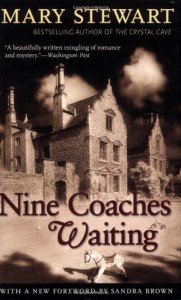 Nine Coaches Waiting by Mary Stewart
Nine Coaches Waiting by Mary Stewart
A governess in a French château encounters an apparent plot against her young charge’s life in this unforgettably haunting and beautifully written suspense novel. When lovely Linda Martin first arrives at Château Valmy as an English governess to the nine-year-old Count Philippe de Valmy, the opulence and history surrounding her seems like a wondrous, ecstatic dream. But a palpable terror is crouching in the shadows. Philippe’s uncle, Leon de Valmy, is the epitome of charm, yet dynamic and arrogant—his paralysis little hindrance as he moves noiselessly in his wheelchair from room to room. Only his son Raoul, a handsome, sardonic man who drives himself and his car with equally reckless abandon, seems able to stand up to him. To Linda, Raoul is an enigma—though irresistibly attracted to him, she senses some dark twist in his nature. When an accident deep in the woods nearly kills Linda’s innocent charge, she begins to wonder if someone has deadly plans for the young count.
+++++++++++++++++++++++++++++++++++++++
Dipping back into these books for this post, I’m surprised these novels have not been tapped for a PBS or BBC television miniseries.
Gift Ideas for the Gardener
Winter is actually a very pleasant time for gardeners. There is very little to be done in the garden, so we can rest our weary backs, put our feet up and dream of spring with seed catalogs and Garden Literature.
Garden Literature, you wonder, really?
Let me assure you, there is nothing better than reading about other people’s gardens, and despite the occasional pang of garden envy, we learn a great deal from our readings.
I’m not talking about your standard gardening reference books – the ones that help identify diseases and pests, or instruct on how to grow larger tomatoes. No dear reader, this unique Garden Literature series is something else altogether.
Modern Library Gardening Series
Edited by Michael Pollan
These books are beautifully published (the covers alone catcalled me from a bookstore display table), they make lovely “dip in and out” reading, but most importantly, the series has rediscovered and published out-of-print and forgotten titles from both American and British renowned gardeners.
Once upon a time, in the not-so-distant past, Gardening was the number one leisure activity and there were phenomenal garden writers. They wrote articles in publications, authored books about their gardens, but mostly wrote of the pure delight of having and maintaining their gardens. These are not dry treatises that go on and on about soil augmentation, but funny, down-to-earth and friendly writings that expose both the gardeners’ mistakes and successes. But in each of these slim volumes, whether a hobby, a pastime or as an all encompassing obsession – the joy of gardening shines through.
The publishers’ (Random House) summary of each book will give you an idea of the delight these titles hold for any gardener.
++++++++++++++++++++++++++++++++
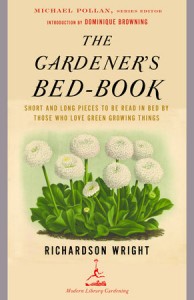 First published in 1929, The Gardener’s Bed-Book is a much beloved gardening classic by the renowned editor of House & Garden magazine in the 1920s and ’30s. Each of its 365 perfectly sized little essays is meant to be read in bed at night after a long day’s work, either real or imagined, in the garden. A charming and mischievously funny companion to curl up with.
First published in 1929, The Gardener’s Bed-Book is a much beloved gardening classic by the renowned editor of House & Garden magazine in the 1920s and ’30s. Each of its 365 perfectly sized little essays is meant to be read in bed at night after a long day’s work, either real or imagined, in the garden. A charming and mischievously funny companion to curl up with.
Old Herbaceous is a classic British novel of the garden, with a title 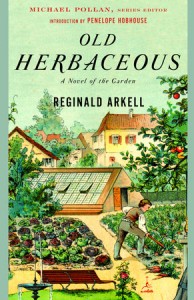 character as outsized and unforgettable as P. G. Wodehouse’s immortal butler, Jeeves. Born at the dusk of the Victorian era, Bert Pinnegar, an awkward orphan child with one leg a tad longer than the other, rises from inauspicious schoolboy days spent picking wildflowers and dodging angry farmers to become the legendary head gardener “Old Herbaceous,” the most esteemed flower-show judge in the county and a famed horticultural wizard capable of producing dazzling April strawberries from the greenhouse and the exact morning glories his Lady spies on the French Riviera, “so blue, so blue it positively hurts.” Sprinkled with nuggets of gardening wisdom, Old Herbaceous is a witty comic portrait of the most archetypal—and crotchety—head gardener ever to plant a row of bulbs at a British country house.
character as outsized and unforgettable as P. G. Wodehouse’s immortal butler, Jeeves. Born at the dusk of the Victorian era, Bert Pinnegar, an awkward orphan child with one leg a tad longer than the other, rises from inauspicious schoolboy days spent picking wildflowers and dodging angry farmers to become the legendary head gardener “Old Herbaceous,” the most esteemed flower-show judge in the county and a famed horticultural wizard capable of producing dazzling April strawberries from the greenhouse and the exact morning glories his Lady spies on the French Riviera, “so blue, so blue it positively hurts.” Sprinkled with nuggets of gardening wisdom, Old Herbaceous is a witty comic portrait of the most archetypal—and crotchety—head gardener ever to plant a row of bulbs at a British country house.
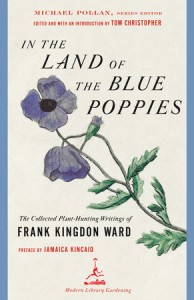 In the Land of the Blue Poppies. During the first years of the twentieth century, the British plant collector and explorer Frank Kingdon Ward went on twenty-four impossibly daring expeditions throughout Tibet, China, and Southeast Asia, in search of rare and elusive species of plants. He was responsible for the discovery of numerous varieties previously unknown in Europe and America, including the legendary Tibetan blue poppy, and the introduction of their seeds into the world’s gardens. Kingdon Ward’s accounts capture all the romance of his wildly adventurous expeditions, whether he was swinging across a bottomless gorge on a cable of twisted bamboo strands or clambering across a rocky scree in fear of an impending avalanche. Drawn from writings out of print for almost seventy-five years, this new collection, edited and introduced by professional horticulturalist and House & Garden columnist Tom Christopher, returns Kingdon Ward to his deserved place in the literature of discovery and the literature of the garden.
In the Land of the Blue Poppies. During the first years of the twentieth century, the British plant collector and explorer Frank Kingdon Ward went on twenty-four impossibly daring expeditions throughout Tibet, China, and Southeast Asia, in search of rare and elusive species of plants. He was responsible for the discovery of numerous varieties previously unknown in Europe and America, including the legendary Tibetan blue poppy, and the introduction of their seeds into the world’s gardens. Kingdon Ward’s accounts capture all the romance of his wildly adventurous expeditions, whether he was swinging across a bottomless gorge on a cable of twisted bamboo strands or clambering across a rocky scree in fear of an impending avalanche. Drawn from writings out of print for almost seventy-five years, this new collection, edited and introduced by professional horticulturalist and House & Garden columnist Tom Christopher, returns Kingdon Ward to his deserved place in the literature of discovery and the literature of the garden.
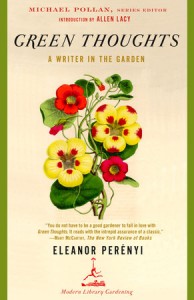 A classic in the literature of the garden, Green Thoughts is a beautifully written and highly original collection of seventy-two essays, alphabetically arranged, on topics ranging from “Annuals” and “Artichokes” to “Weeds” and “Wildflowers.” An amateur gardener for over thirty years, Eleanor Perényi draws upon her wide-ranging knowledge of gardening lore to create a delightful, witty blend of how-to advice, informed opinion, historical insight, and philosophical musing. There are entries in praise of earthworms and in protest of rock gardens, a treatise on the sexual politics of tending plants, and a paean to the salubrious effect of gardening (see “Longevity”). Twenty years after its initial publication, Green Thoughts remains as much a joy to read as ever.
A classic in the literature of the garden, Green Thoughts is a beautifully written and highly original collection of seventy-two essays, alphabetically arranged, on topics ranging from “Annuals” and “Artichokes” to “Weeds” and “Wildflowers.” An amateur gardener for over thirty years, Eleanor Perényi draws upon her wide-ranging knowledge of gardening lore to create a delightful, witty blend of how-to advice, informed opinion, historical insight, and philosophical musing. There are entries in praise of earthworms and in protest of rock gardens, a treatise on the sexual politics of tending plants, and a paean to the salubrious effect of gardening (see “Longevity”). Twenty years after its initial publication, Green Thoughts remains as much a joy to read as ever.
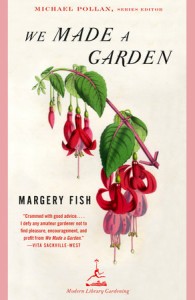 First published in Britain in 1956 and never before available in America, We Made a Garden is the classic story of a unique and enduring English country garden. One of Britain’s most esteemed gardening writers recounts how she and her husband set about creating an exemplary cottage garden from unpromising beginnings on the site of the former farmyard and rubbish heap that surround their newly purchased home in the countryside of Somerset, England. Each imbued with a strong set of horticultural opinions and passions, Mr. and Mrs. Fish negotiate the terrain of their garden, by turns separately and together, often with humorous collisions.
First published in Britain in 1956 and never before available in America, We Made a Garden is the classic story of a unique and enduring English country garden. One of Britain’s most esteemed gardening writers recounts how she and her husband set about creating an exemplary cottage garden from unpromising beginnings on the site of the former farmyard and rubbish heap that surround their newly purchased home in the countryside of Somerset, England. Each imbued with a strong set of horticultural opinions and passions, Mr. and Mrs. Fish negotiate the terrain of their garden, by turns separately and together, often with humorous collisions.
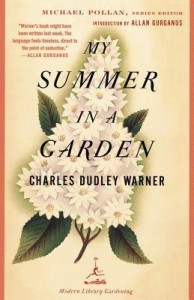 Oft quoted but seldom credited,Charles Dudley Warner’s My Summer in a Garden is a classic of American garden writing and was a seminal early work in the then fledgling genre of American nature writing. Warner—prominent in his day as a writer and newspaper editor—was a dedicated amateur gardener who shared with Mark Twain, his close friend and neighbor, a sense of humor that remains deliciously fresh today. In monthly dispatches, Warner chronicles his travails in the garden, where he and his cat, Calvin, seek to ward off a stream of interlopers, from the neighbors’ huge-hoofed cows and thieving children, to the reviled, though “propagatious,” pusley weed. To read Warner is to join him on his rounds of his beloved vegetable patch, to feel the sun on his sore back, the hoe in his blistered hands, and yet, like him, never to lose sight of “the philosophical implications of contact with the earth, and companionship with gently growing things.”
Oft quoted but seldom credited,Charles Dudley Warner’s My Summer in a Garden is a classic of American garden writing and was a seminal early work in the then fledgling genre of American nature writing. Warner—prominent in his day as a writer and newspaper editor—was a dedicated amateur gardener who shared with Mark Twain, his close friend and neighbor, a sense of humor that remains deliciously fresh today. In monthly dispatches, Warner chronicles his travails in the garden, where he and his cat, Calvin, seek to ward off a stream of interlopers, from the neighbors’ huge-hoofed cows and thieving children, to the reviled, though “propagatious,” pusley weed. To read Warner is to join him on his rounds of his beloved vegetable patch, to feel the sun on his sore back, the hoe in his blistered hands, and yet, like him, never to lose sight of “the philosophical implications of contact with the earth, and companionship with gently growing things.”
++++++++++++++++++++++++++++++++
There are prefaces that entice even before you enter the book itself – from today’s gardening notables such as Jamaica Kincaid, Dominque Browning, and Penelope Hobhouse (don’t gardeners have just the best names?).
Michael Pollan is the contributing editor to this series and perhaps he says it best:
“these writers are some of the great talkers in the rich, provocative, and frequently uproarious conversation that, metaphorically at least, has been taking place over the back fence of our gardens at least since the time of Pliny.”
Here’s a Garden Literature series that will gladden the heart of the gardener on your list.
Gift Idea for the New Parents
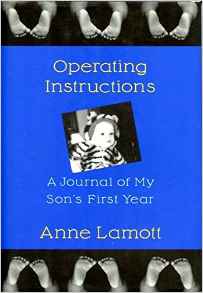 Operating Instructions
Operating Instructions
by Anne Lamott
“There really are places in your heart you don’t know exist until you love a child” — Anne Lamott
I give this slim volume to every new mother, and no, I don’t think it’s weird to give a book at baby showers. Remember, please, a book is never a bad gift here at Book Barmy.
There’s a lovely new Mom-to-be on my Christmas list this year and before I wrapped Operating Instructions I chuckled away in re-reading parts of this unique book.
Anne Lamott is best known for her book on writing (Bird by Bird) and her many books on her own brand of spirituality (start with Traveling Mercies).
She writes achingly, from her heart and everything she pens has a clear authenticity that strikes a cord with this reader. Even her books on spirituality are affectionate, wise and very funny — regardless of your religious persuasion.
Operating Instructions is the honest and funny diary of her son’s first year. She recounts difficulties with sleep deprivation, colic, struggles to stay free from her addictions, grief over her father’s recent death and the absence of her son’s father — all conveyed with self-deprecating humor and wit.
This is not a touchy-feely-how-to-be-a-perfect-mother guide, this is a brutally honest look at the good, the bad, the ugly and the scary parts of the first year of parenting.
Ms. Lamott confesses to the times she wanted to just “put him outside as an experiment in natural selection” and recoils at the little guy’s private parts.
She boldly expresses her liberal political rants against the Bush presidency of the time, so the book feels a bit dated in that respect. But in all other aspects this is a timeless and valuable gift for any new Mom (or Dad).
After my recipients have read Operating Instructions, I usually get comments along the lines of a” breath of fresh air”, “so funny I was reading it aloud to my husband”, “great fun while nursing” and even “reading this book made me feel less isolated and more connected — I wasn’t the only frightened mother out there”.
So, let’s help out any of those new parents on your gift list — offer to babysit, take over a casserole, walk their dog and most importantly — give them this book.
Gift Ideas for the Every Day Cook
 I don’t mean everyday, as in common, I mean that person on your gift list who cooks for loved ones every day. These are not foodies, per se, but people who enjoy preparing home cooked meals…well, most of the time anyway.
I don’t mean everyday, as in common, I mean that person on your gift list who cooks for loved ones every day. These are not foodies, per se, but people who enjoy preparing home cooked meals…well, most of the time anyway.
They cook from a place of love, they derive pleasure from preparing meals that not just nourish, but also bring family and friends together.
Let’s thank that dedicated meal preparer in your life with two largely unknown books about home cooking.
Home Cooking More Home Cooking
by Laurie Colwin
You may have never heard of Laurie Colwin, she never gained the notoriety of more famous food icons such as Julia Child or Ina Garten. Best know as a novelist, Ms. Colwin’s two volumes of food essays continue to sell largely due to word-of-mouth recommendations from food enthusiasts who cherish these two volumes. Many of these essays first appeared in the now out-of-business (sob!) Gourmet magazine. Sadly, Ms. Colwin died of heart failure in 1992 at the age of 48.
We enter Ms. Colwin’s world warily at first — after all, her minuscule New York apartment reveals that her stove is used for storage and dish washing must be done in the bathtub. But, soon her chatty, open and often humorous essays have you feeling right at home, perched on her counter, sipping a glass of beer, warmly embraced by her radiant joy of food.
Ruth Reichl, the writer, former Gourmet magazine (sob!) editor and New York Times restaurant critic, said it best: “You want to be in the kitchen with her — that is her secret. She is the best friend we all want. She never talks down to you.”
She talks of simple, homey food such as black beans, lentil soup, potato salad and this — “There is nothing like roast chicken. It is helpful and agreeable, the perfect dish no matter what the circumstances. Elegant or homey, a dish for a dinner party or a family supper, it will not let you down.”
She goes on to describe one of her most memorable meals– “beef stew and buttered noodles, runny cheese, and plain green salad with wonderful dressing.” (Hungry yet?)
There is no pretension here, she won’t pretend that the boring bits of cooking are a higher calling; “It is wise to have someone you adore talking to you in the kitchen while you make these eggs,” she writes, “or to be listening to something very compelling on the radio.”
Of course, there are recipes, my two volumes are studded with markers and pencil checks…but there is also honesty and failure. Ms. Colwin never shies away from recounting her very funny cooking disasters. There is one dinner, prepared with friends under the influence, which was so inedible that her guests mutinied and they all went out to dinner.
To Ms. Colwin, the point of cooking is eating–eating with family and friends, definitely, but she also admits to eating straight from the cooking pot, ravenous and gloriously alone.
This quote below best captures the tone of the essays in Home Cooking and More Home Cooking. “I was taught in my Introduction to Anthropology [a college course], it is not just the Great Works of mankind that make a culture. It is the daily things, like what people eat and how they serve it.”
This Christmas, please honor your every day cook — come to the table with your hunger, lots of compliments, a bottle of wine and these two volumes.
+++++++++++++++++++++++++++++++++++++++++++
I am hoping Santa will bring me this newest culinary treasure from another down-to-earth cook, Ruth Reichl.
Now, if you’ll excuse me, this every day cook has gotta go make dinner.
Gift Ideas for the Reader of Very Little
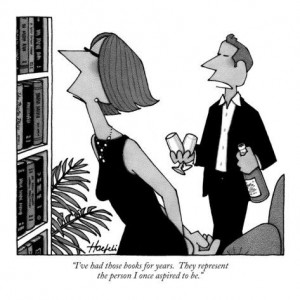 We all have those friends, you know, the ones who read very little. Once in awhile, they’ll pick up a trendy bestseller, but, normally, go days or even weeks without picking up a book (I know!). We know them to be very smart (one friend is a brilliant software designer but doesn’t read much because he is dyslexic) and respect them, but secretly, we can’t understand how they can wait until the airport to buy a paperback — because (wait for it…) they haven’t brought anything to read. Often these friends enjoy more visual media — films, art, television, video games – they are often very creative and, as I mentioned before, off the charts in smarts. But, what to get for these friends? Yes, yes you could resort to a sweater or theater tickets, but here in on the planet of Book Barmy — they must have books. So here are a few suggestions.
We all have those friends, you know, the ones who read very little. Once in awhile, they’ll pick up a trendy bestseller, but, normally, go days or even weeks without picking up a book (I know!). We know them to be very smart (one friend is a brilliant software designer but doesn’t read much because he is dyslexic) and respect them, but secretly, we can’t understand how they can wait until the airport to buy a paperback — because (wait for it…) they haven’t brought anything to read. Often these friends enjoy more visual media — films, art, television, video games – they are often very creative and, as I mentioned before, off the charts in smarts. But, what to get for these friends? Yes, yes you could resort to a sweater or theater tickets, but here in on the planet of Book Barmy — they must have books. So here are a few suggestions.
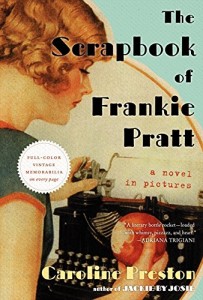 The Scrapbook of Frankie Pratt
The Scrapbook of Frankie Pratt
by Caroline Preston
This is an entirely different reading experience, more pictorial than novel. It’s a story told through memorabilia and cultural artifacts from the 1920s to 1930’s. A visual journey through the coming of age of Frankie Pratt, a girl who grows up in New Hampshire and earns a scholarship to Vassar College. She meets fascinating people of the jazz age, and follows in their footsteps to New York City and to Paris after graduation. Along the way, she writes stories and edits magazines from the low of True Confessions in New York City to the high of a well-respected literary journal, where she is able to work with James Joyce and Ernest Hemingway (in Paris, no less!).
There are childhood adventures, broken hearts, life-long friendships, ailing parents and finally true love…a simple, familar story that comes alive through ticket stubs, newspaper clippings, photographs, pressed flowers, fabric swatches, candy wrappers – well, you get it — it’s a scrapbook.
The author pulled from her own massive collection of vintage ephemera to create this unique book which holds a special place in my reading room. A gift from my sister several years ago, I devoured the book in one sitting, caught up in the vibrant pages and the story told with very few words. It remains close to my reading chair, because I’ve picked it up again and again noticing details that I missed the first couple of reads.
Here’s a peek inside (forgive my lousy photos – click twice to make bigger)
This is a visual delight of a book, one to savor over and over again.
++++++++++++++++++++++++++++++++++++++++++++
Right next to this book on my shelves are these beautiful books.
Griffin & Sabine Sabine’s Notebook
by Nick Bantock
These were hugely popular back in the 90’s and according to many critics, somewhat of a gimmick – but I adored them and have hung onto them all these years later. Every so often, I’ll take them down and fall into what is the equivalent of adult pop-up books.
Griffin and Sabine are located on opposite ends of the earth — Griffin is a lonely artist in damp England, while Sabine is a native living on the sun-drenched island of Sicmon in the South Pacific. We meet them as they have just become pen pals and it is their correspondence back and forth which comprises the Griffin and Sabine books. Soul mates, they decide to meet, face to face. Their quest (and failures) to meet one another forms the backbone of these books. Their lives become more and more mysterious in the second book as they get tangled up in a smoke and mirrors adventure.
There are letters to open, postcards to read, handwriting to decipher, maps to study, all, for this reader — pure delight. You’re given the sensation of having stumbled upon a romantic mystery to which only you are privy – a private secret kept locked between the covers. The story is nothing much, but the discovery of it is exquisite.
The art of these books is in their meticulous printing. There are actual envelopes glued into the text which you open to unfold an actual letter, postcards and beautiful illustrations– a true work of love on the part of Mr. Bantock and the publisher. Just look here (click to see larger):
There have been further books in the series which you can seek out, but these first two are my favorite.
In the age of e-readers, electronic and audio books here are three books that must be read in their paper format – you have to hold them in your hands and physically turn the pages to enjoy them.
There you go, some books recommendations for those we love — despite their lack of voracious reading habits.



